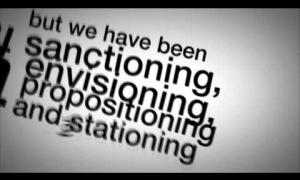Good client, bad client: How to know the difference
June 10, 2010
In my talks to speechwriters and other communicators who support leaders, I tell them there are basically two kinds of clients in any give c-suite: clients who value communication and clients who don’t. “You want to work only with clients who do,” I tell them, assuring them good clients are out there.
It’s an oversimplification of course. So I thought I’d flesh it out a little; maybe you can help. (Pardon my use of the universal “she”; it’s payback time.)
A good communication client thinks she got ahead in the world by making persuasive arguments.
A bad client thinks she got ahead by avoiding saying the stupid thing.
A good client doesn’t try to be perfect, but has faith that people will get the right impression from an amalgam of a million honest words and a thousand well-intended actions.
A bad client knows that her actions speak loudly, but doesn’t know what her actions say. Meanwhile, she worries that one false word in one speech will ruin her reputation forever.
A good client worries about the thrust of the message, lets others handle the details. “Tell me where you want me?”
A bad client deflates the thrust of the message by focusing on a thousand details. “You want me to do what?”
A good client is tough: “You can do better.”
A bad client is tough: “It still isn’t right.”
A good client is experienced enough to know a sharp communicator when he or she sees one.
A bad client assumes all communicators are weak-minded space cadets, and unfortunately manages to gather plenty of evidence for her point of view.
A good client knows communication is hard, and acknowledges it.
A bad client knows communication is hard, and pretends it’s easy.
A good client remembers what she wanted to know when she was a middle manager.
A bad client wonders, “If I were an employee, what would I want to hear?”
A good client assumes that her audience knows most of what she knows, and struggles to figure how she can use her unique vantage point to offer them a useful perspective.
A bad client assumes her audience doesn’t know half of what she knows, and struggles to figure out what she can say that they will be able to grasp.
A good client wants to share ideas.
A bad client wants to make impressions.
If you have a bad client, look for a good client—either inside the organization or outside. And if you have a good client, serve her well and help her win.


